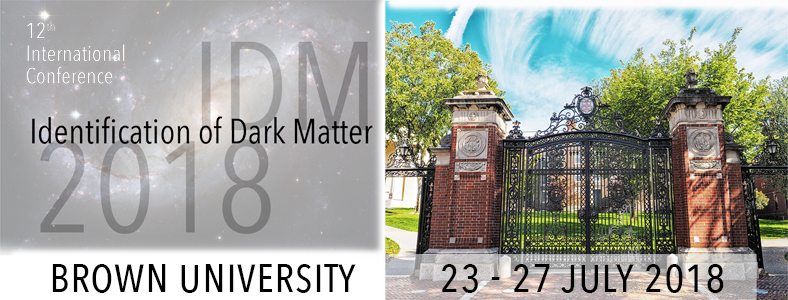Conveners
2.1 Plenary Session
- Nigel Smith (SNOLab)
The EDELWEISS collaboration is performing a direct search for WIMP dark matter in the range from 1 to 20 GeV/c2 using cryogenic germanium detectors equipped with a full charge and thermal signal readout. We present the most recent results and the currently ongoing program to reduce the experimental thresholds and gain sensitivity for low mass WIMPs, either utilizing the Neganov-Trofimov-Luke...
PandaX experiment, located at China JinPing underground Laboratory (CJPL), is a 500kg scale liquid xenon dark matter direct detection experiment. With recent data, PandaX-II experiment obtained stringent upper limits on the spin-independent (SI) and spin-dependent (SD) WIMP-nucleon elastic scattering cross sections. Alternative models of dark matter are also explored using this data....
LUX-ZEPLIN (LZ) is a WIMP dark matter search under construction at the 4850’ level of the Sanford Underground Research Facility in Lead, South Dakota. The centerpiece of the experiment is a two-phase TPC containing seven active tonnes of liquefied xenon. Rejection of backgrounds is enhanced by a set of veto detectors, including a liquid scintillator Outer Detector. LZ has been designed to...
LUX-ZEPLIN (LZ) is a next generation dark matter direct detection experiment that will operate 4850 feet underground at the Sanford Underground Research Facility (SURF) in Lead, South Dakota, USA. Using a two-phase xenon detector with an active mass of 7 tonnes, LZ will search primarily for low-energy interactions with Weakly Interacting Massive Particles (WIMPs), which are hypothesized to...
The SuperCDMS SNOLAB experiment, currently under construction, will seek direct detection of dark matter with mass from 0.5-10 GeV/c$^2$. It has been designed with an initial sensitivity to nuclear recoil cross sections ~ 10$^{−43}$ cm$^2$ for a dark matter particle mass of 1 GeV/c$^2$, and with capacity to continue exploration to both smaller masses and better sensitivities. The experiment...
